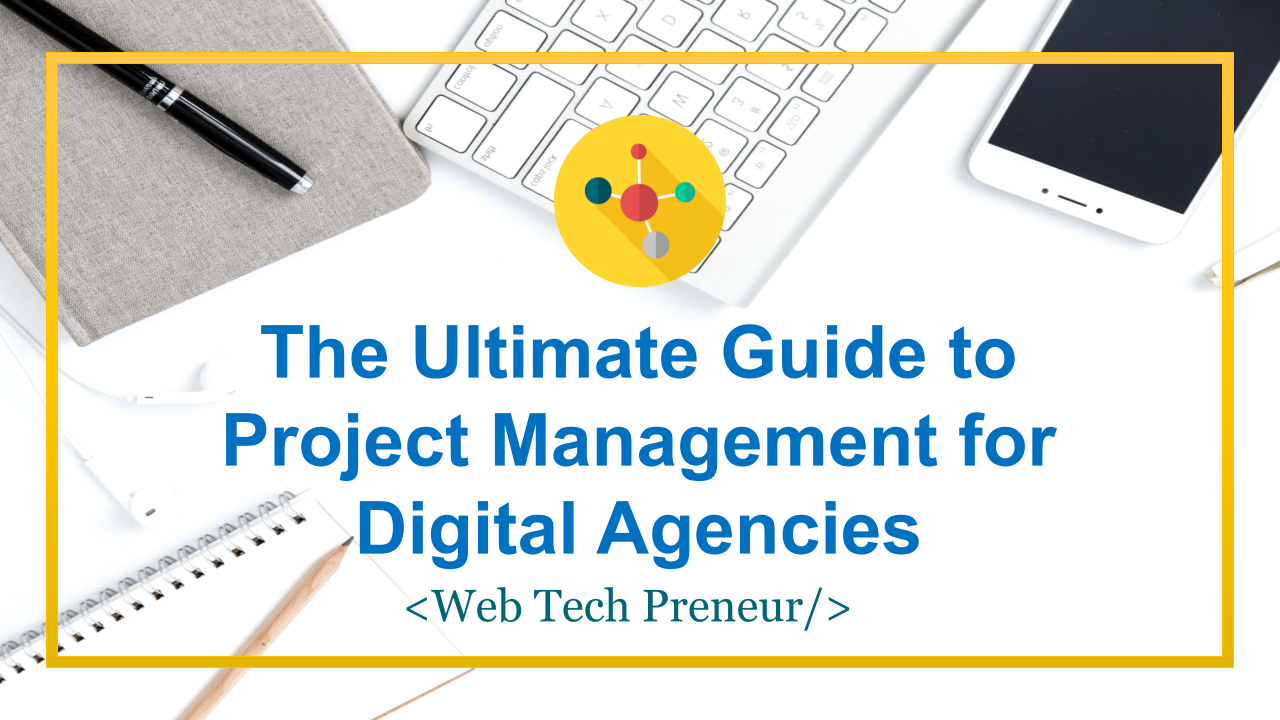The Ultimate Guide to Project Management for Digital Agencies
Project management in digital agencies or any other creative environment will always be a challenging thing: on the one hand, project management is essentially about structure, and the rigidity structure tends to limit creativity. On the other hand, when left unchecked, too much freedom in creativity can lead to various efficiency issues like missed deadlines, projects went over budget, and other issues.
Sow, having a skilled project manager that knows how to manage creativity is a must. A clear project management strategy can help ensure the efficiency and productivity of your team, which in turn, can lead to successful projects, keep your clients happy, and more revenue.
In this guide, we will discuss all you need to know about implementing project management in your digital agency. By the end, you’ll learn how to successfully implement a scalable project management process to avoid miscommunications, inefficient back-and-forth phone calls/email threads, and missed deadlines.
Key Principles of Project Management for Digital Agencies
To really understand how to implement effective project management in digital agencies, we should first understand how an efficient digital agency should perform.
While the actual workflow between different agencies can vary, typically an average digital agency project will involve five main steps:
Typical Project Workflow in a Digital Agency
Step 1: Conception and Client Onboarding
In this first step, the client briefs the agency about the project, or it may also involve a meeting between the client and the agency to discuss what the project is going to be.
Once briefed, the agency will then enter a conception/ideation process involving in-depth research in order to build a solid, personalized marketing strategy for the specific client.
Step 2: Content Development
Based on the strategy identified in the previous step, the agency begins developing the content for the client.
Step 3: Approval Process
The client gives feedback for the submitted content/design, and after a necessary amount of revisions will approve the work, allowing the project to move to the next step.
Step 4: Launch
Once the client is happy with the final deliverable, the product (whatever the form) can be launched.
Step 5: Evaluation and Client Maintenance
The agency should evaluate the project to see what worked and what can be improved. The agency should also meet with the client sometime after the launch to discuss results and collect feedback.
Improving Efficiencies of Each Step
Based on the typical workflow above, project management for digital agencies is essentially about managing three main areas:
- Communication and collaboration: ensuring clear communications for everyone involved in the project from your internal team members, clients, third-party vendors, and more.
- Progress tracking: accurate and real-time tracking of deadlines, progress, and results
- Workflow analysis: regular analysis to improve and automate workflows of the project like identifying bottlenecks, redundant processes, and applying improvements when possible.
Based on these three principles, below we will share some actionable tips to implement these project management principles to your digital agency:
How To Implement Project Management Successfully
1. Improving Collaboration by Having a Centralized space
Communication is often the biggest issue in any digital agency, and the bigger the agency is, typically the more prevalent this issue will be.
It’s often for bigger agencies to struggle with too many files, instructions, and assets being lost in too many emails and different platforms. In the event of disputes, team members often have to spend a few hours or even their whole workday looking for certain versions of deliverables, and other similar issues.
To tackle this issue, the most viable solution is to have a centralized hub to store everything in one place. Various workflow management platforms can allow you to store all relevant files and communications in one place, and you can also track all decisions for each project.
By having improved transparency and accountability, we can achieve a more efficient collaboration which in turn, will lead to more productive executions of your projects.
2. Visualize Your Workflow for Easier Analysis
A creative agency’s project can be very complex, and so it’s crucial to visualize the workflow in the form of a workflow diagram (or other methods), so we can have a clearer bird’s-eye view of the whole steps from start to finish. Be as detailed as possible when mapping your workflow, including the assignment of roles and workloads.
This might seem like hard work, but will be totally worth it once the project is up and running. We can identify bottlenecks and redundancies before the actual execution of the project, and we can also track the progress to ensure the project stays within budget and deadline.
3. Managing Client Expectations
A clear aspect of managing client expectations is to centralize all important decisions and discussions in one platform. This allows your client to easily track the progress of the project, and if necessary you can allow them to leave feedback and comment on the current task.
You can do this by having a platform like Function Point, and give this client access as collaborators in the project.
With this in place, you can eliminate the need for back-and-forth emails, and when something comes up, Function Point can send an automatic notification so both your team and your client can stay on top of it.
By ensuring all assets and communications are located in one place, you can also reduce miscommunications, confusion, and disputes, which often result in faster approval processes with fewer revision cycles.
Closing Thoughts
Project management in digital agencies is essentially about ensuring efficient communication, regularly tracking your progress, and identify inefficiencies to improve upon them. Having an all-in-one project management software designed for digital agencies can help you do all of the above.
Continuously analyze your current project workflow and identify the challenges and bottlenecks you are currently facing. Use the relevant tools and strategies to tackle each of these challenges and start improving your agency’s efficiency and productivity.


Comments are closed.